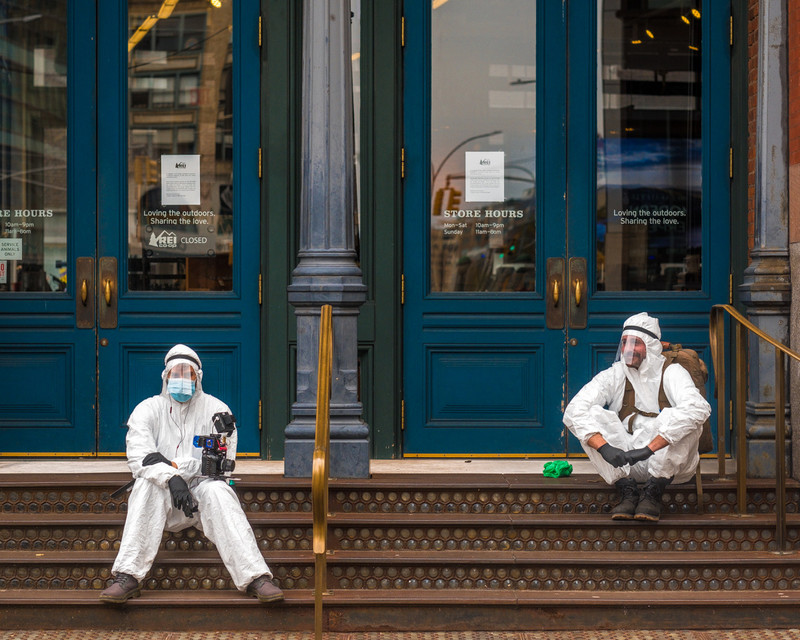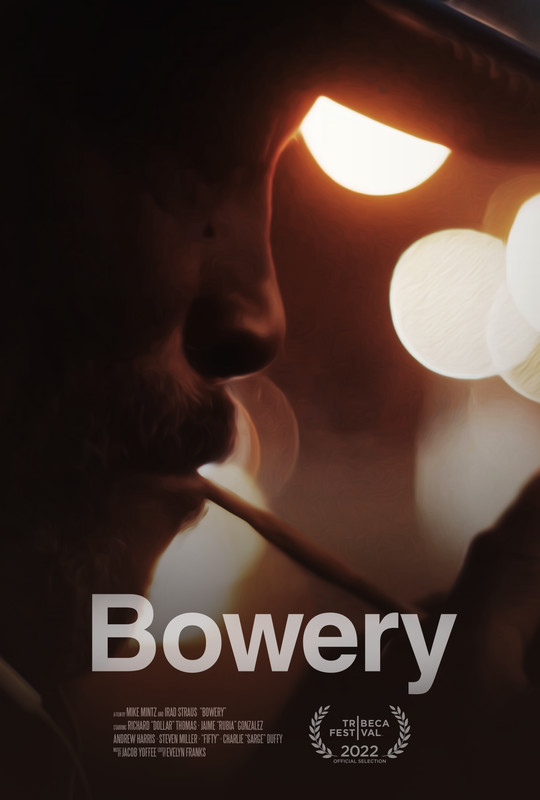An interview with Mike Mintz about Bowery
- MIFF news
- Mar 9, 2023
- 5 min read

Mike Mintz and Irad Straus are the directors of the feature documentary, "Bowery" which tells the story of five interconnected men and women as they battle mental health and addiction on the Lower East Side of Manhattan. The film had its world premiere at the Tribeca Film Festival and was nominated and selected as an award-winning documentary in the seasonal festival of MIFF. The film stars Richard "Dolla" Thomas, who hustles on the streets every day in his wheelchair for a few dollars. Richard pines for Jaime "Rubia" Gonzalez, who hopes to land a job and prepares for an interview. Steve Miller and Andrew Harris wrestle to overcome their dope habit, while fifty, who comes from a long line of hustlers, sells drugs while aspiring for more.
An observational documentary, Bowery takes an intimate look at the growing homeless subculture in the United States set against a historically turbulent year. It is our pleasure to interview Mike Mintz regarding his work as a director on Bowery.

What inspired you to work on Bowery?
Mike Mintz: We never set out to make a film. While Irad was living near the Bowery, he became friendly with Richard ‘Dolla’. Irad brought me (Mike) to meet him one day and told me to bring my camera - since Richard expressed an interest in being interviewed, and we developed a bond. We kept going back once a week to visit and interview him. Once-a-week turned into multiple times per week. Soon he introduced us to others, and we ended up knowing most of the unhoused people in the area. It took us a few months before we realized we had a unique and important piece of art in front of us.
What makes you fascinated with the cinematic language and what was the first film project you worked on?
Mike Mintz: That’s a tough question. Speaking for myself, I believe more than any other medium that cinema has a unique ability to appeal directly to the senses and memory. Cinema replicates life - either imagined or real. It can strike you right in the heart in deeply unconscious ways, even with the slightest movement of the camera. I’ve never gotten the same goosebumps on my arms like I have when experiencing cinema. My first film project was a scifi short I wrote and directed in college called “Intelligent Life”. I can’t say I recommend it, but it was a great experience.

Please tell us how "Bowery" came to life and what was the most challenging aspect of producing and directing this feature documentary film.
Mike Mintz: After a few months visiting the Bowery and getting to know our contributors via interviews, we earned a rapport with them that allowed us to melt into the background of the environment. That’s when the real magic began, and we really let our contributors drive the narrative. Irad and I developed a directing strategy whereby he watched over the scene so that I could put all of my focus into the camerawork. He also alerted me when I was about to trip over something or back into a pole. This allowed me to really let go and dance with our contributors, learn their micromovements and naturally find the most cinematic way to capture a moment. And I only tripped once during the whole filming process! The trickiest part of filming was that there was practically no coordination. None of our contributors had cell phones, so we simply relied on the expectation that they were still in their regular spots day-after-day. There were many days that we showed up and nobody was around. Ultimately there were very few surprises, which speaks to the human need for consistency and routine, and the sad reality that they really had nowhere else to go. The hell that they knew was better than the hell they didn’t.

How can documentaries such as Bowery change the way we view issues such as homelessness, poverty and mental health?
Mike Mintz: Bowery isn’t a film that focuses on the “big picture”. There are no experts spouting statistics. This was very intentional. We really wanted the experience of our contributors to speak for themselves. I think sometimes after reading an article about the homelessness issue, it’s easy to go “wow that’s really awful” and then to continue about your day. No change will take place until people start looking at the unhoused as equal humans with hopes, dreams and feelings, rather than as statistics. We hope that putting their humanity front and center, and allowing the viewer to tag along on this cinematic journey can plant a seed in the mind that will last far longer than the effect of an article, and ultimately inspire change for the better.
How was the premiere of the film in Tribeca and what is your plan for further distribution of the film and reaching out to more people around the world with Bowery?
Mike Mintz: We were incredibly honored to premiere with Tribeca. Being such a “New York movie” it was only fitting that we have our World Premiere in the city. And because it’s the next neighborhood over from the Bowery, we always thought it would be the ideal place to premiere. We had our screening at a cinema right in the neighborhood (it was actually captured in the film) and brought some of our contributors as VIPs. It was a beautiful experience - especially since our contributors loved the movie. We will likely be distributing the film independently. It’s a tough market right now for indie verite docs like Bowery, and we hope to spread the film and its message through a grass-roots network of community screenings, word-of-mouth and organic publicity. The film should be able to rent on most platforms including Amazon, Apple, etc by summer 2023.

What is your next film project and what are you currently working on?
Mike Mintz: I’m developing two feature narrative projects at the moment. One is a guerilla-style political noir set in the seedy underground of Washington DC, and the other is based on a true story surrounding a slaughterhouse in the American Midwest in the late 1980s.
Does documentary filmmaking stand out more than other genres to you? Why?
Mike Mintz: Documentary is unique because at some level you have to reflect reality. Even with the most polished-style doc projects, there is at some point a truth that is being sought. Of course, that doesn’t mean that documentaries are necessarily always telling the truth. But the illusion of truth that they create is very potent, and in that sense it’s like playing with fire more than any other film genre. Personally, I never expected to work in documentary - my instincts have always been inspired by narrative films. I believe those instincts come through in Bowery’s cinematography.

What is the most creative aspect of directing a documentary project for you?
Mike Mintz: As far as verité docs are concerned, the most creatively challenging aspect is that you really don’t know what’s going to happen. We had no narrative guide or script to work from. Sure, we could speculate, but the most magical moments - both big and small - were things we could have never predicted or planned for; like Fifty making his delivery, or a global pandemic.
What kind of impact would you like to have in the world with your film projects?
Mike Mintz: Personally, I want the films I create to act as little mind viruses. I want to provide a cinematic experience that stays with people, and find a way to change behavior, even in the most subtle ways. I see Bowery as fulfilling that vision. We’ve had so many people tell us that after seeing Bowery, not only did their perspective towards the homeless shift, but they changed their behavior. They start giving more, or they make a point to say hello more often. We love that.



Kaiser OTC benefits provide members with discounts on over-the-counter medications, vitamins, and health essentials, promoting better health management and cost-effective wellness solutions.
Obituaries near me help you find recent death notices, providing information about funeral services, memorials, and tributes for loved ones in your area.
is traveluro legit? Many users have had mixed experiences with the platform, so it's important to read reviews and verify deals before booking.